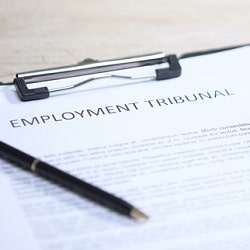
Tribunal: Public interest disclosure claim has little prospect of success
An employment lawyer who appeared at tribunals during a time he said he was “pretty constantly bed bound” due to a back injury has had his disability discrimination claim rejected.
Employment Judge Gumbiti-Zimuto said it was clear Sam Langi had suffered a back injury in a car accident that impacted on his day-to-day activities, but that it did not meet the definition of a disability because it would not last for a year, let alone the rest of his life.
The judge said Mr Langi’s evidence about the extent of the back injury, the result of a road traffic accident in May 2019, was contested by his former law firm, OH Parsons in Slough, “on the basis that it is an exaggerated account of his condition”. He was dismissed in January 2020.
Ruling following a preliminary hearing, Judge Gumbiti-Zimuto identified a “stark contradiction” between what the solicitor told an occupational health physician about the impact of the injury on his work and his description of the injuries to the GP who prepared the medical report for a personal injury claim two months later.
He told the former that he had suffered “an episode of back pain over a decade ago” which resulted in him being bed bound for a few weeks and that the car accident “may have exaggerated the existing vulnerability”.
But he told the GP that he had “no significant history of relevant musculoskeletal or psychological problems”.
The judge said Mr Langi confirmed to the tribunal that he had been bed bound for a few weeks a decade ago, but “was unable to explain why he said different things to different doctors 59 days apart” – though he denied lying to bolster the personal injury claim.
Following the accident, the solicitor said he was “pretty constantly bed bound from August 2019 through to around April 2020”, yet during that time made appearances at the London East Employment Tribunal and worked on occasion at another location an hour away from his home.
The judge said: “The claimant accepted that he did not seek to be excused from either duty but stated that he carried out his duties with difficulty, in pain and discomfort, wearing some form of support aid.”
He accepted there was evidence that the injury impacted on Mr Langi’s ability to do day-to-day activities.
“The evidence does show that the impact is more likely than not substantial, even if one discounts the exaggerations which the claimant is said to have been guilty of.”
But to be disabled for these purposes, the effect of the impairment must be “long-term” and last for at least 12 months.
The judge said the evidence did not show that, at the time of Mr Langi’s dismissal, his back injury would last that long; rather, it was “improving and expected to clear up”.
Mr Langi argued he was also disabled due to hypertension, but the judge was not satisfied it was a disability.
“While it has been shown that he has a life-long condition, he has not shown that it has a substantial effect on his ability to carry out normal day to day activities.”
Though he struck out the disability discrimination part of the solicitor’s claim, Judge Gumbiti-Zimuto refused to strike out Mr Langi’s claim relating to a public interest disclosure.
“I am satisfied that in the events that took place in the period leading up to the claimant’s dismissal, the claimant presents an arguable case that there is information provided by the claimant that the health or safety of an individual has been, is being or likely to be endangered.
“The claimant will have to articulate an argument that the disclosure was in the public interest and not just in his personal interest, however I am satisfied that it is possible for a matter that is of personal self-interest to the claimant to also be in the public interest.”
At the same time, judge said the claim had “little reasonable prospect” of success.
“I am of the view that there appears to be an attempt to ‘shoehorn’ this case which is fundamentally a case about claimant’s performance into a legal argument around protected disclosure which does not fit easily into the factual matrix…
“Even if the claimant is able to show the existence of protected disclosures, the material available to me shows that there was over a period of time a very real concern about the claimant’s performance, such that in my view it is not likely that the claimant will show that the causation necessary to link the various detriments of which he complains and any proven protected disclosure.”














Leave a Comment